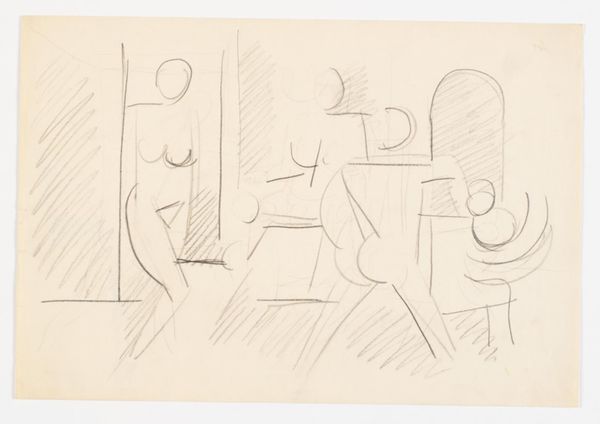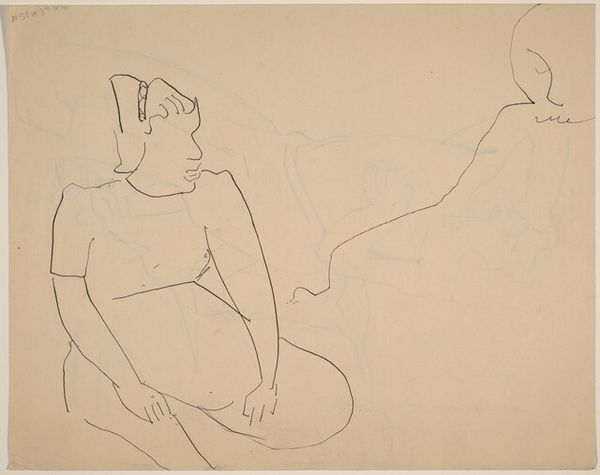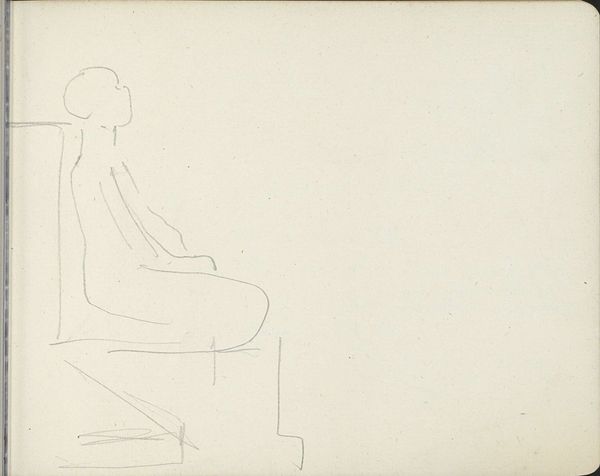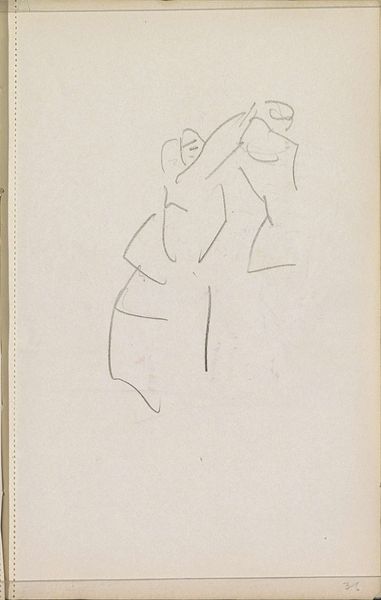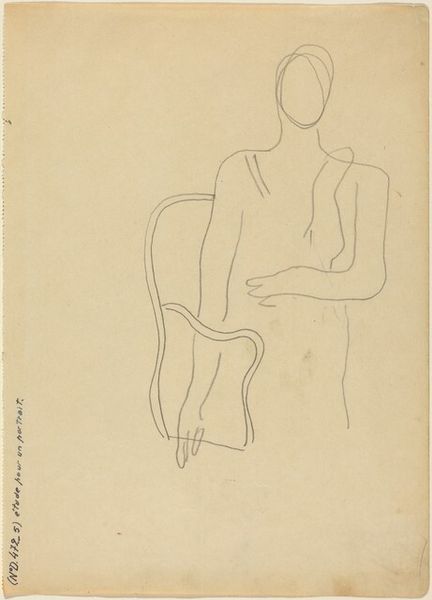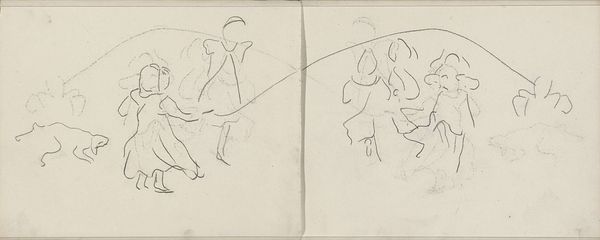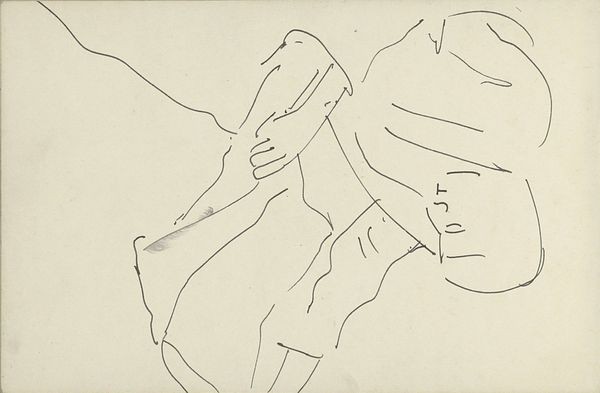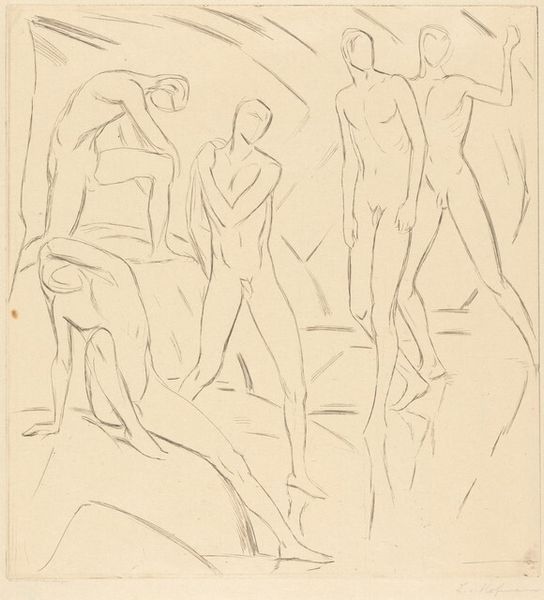
drawing, pencil
#
drawing
#
amateur sketch
#
light pencil work
#
incomplete sketchy
#
figuration
#
form
#
personal sketchbook
#
idea generation sketch
#
ink drawing experimentation
#
geometric
#
pen-ink sketch
#
pencil
#
line
#
sketchbook drawing
#
sketchbook art
#
initial sketch
Copyright: Rijks Museum: Open Domain
This is a sketch of two figures by Carel Adolph Lion Cachet made sometime in the late 19th or early 20th century, probably in pencil. It’s all about the bare essentials, right? Lines that barely contain the forms they describe, as if the figures might dissolve back into the page at any moment. Look at how Cachet uses line weight. The lines defining the figures are so light they seem to float, but then there are these decisive, darker strokes suggesting the ground. It’s like he’s anchoring these ethereal beings to reality. And that hexagon up there, with the cryptic annotations, what's that about? Maybe a structural element, a nod to some underlying geometry, or just Cachet thinking aloud. This sketch reminds me of the way Guston would leave his process visible, the pentimenti showing where he’d changed his mind. There’s a generosity in that, an openness to the viewer. It’s not about hiding the struggle but embracing it. Art isn't about answers, but it's about the questions.
Comments
No comments
Be the first to comment and join the conversation on the ultimate creative platform.
